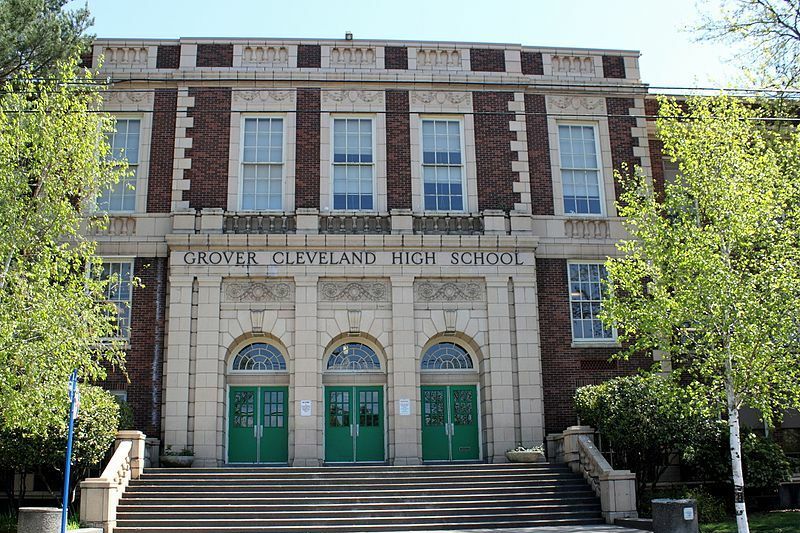To Keep Schools Open, Portland Needs More Substitute Teachers

In New Mexico, members of the National Guard are being pressed into service as substitute teachers in public schools. In Oklahoma, state employees are being deputized to work shifts in schools while keeping their jobs in other agencies. And in Texas and California, parents are taking substitute shifts to keep schools going while certified educators are quarantined or sidelined because of COVID-19.
The need for subs is no less acute in Oregon, where a lack of available substitutes was one key reason why a handful of schools—many of them in high-needs areas and serving a majority of students who are Black, Latino, and/or from lower-income families—closed buildings temporarily during the omicron surge. Pandemic-related shortages are why the state loosened requirements for substitutes in the fall, allowing districts to hire those without college degrees, via an emergency license that expires after the current school year.
But in Portland proper, getting all those who want to substitute through the system—and into the classrooms where they are most needed—has been a continuing challenge, and a contributing factor to why 11 of the district's 81 schools, including four large high schools, all switched to remote learning for at least a week this month.
On Friday, the district announced that three middle schools—George, Harriet Tubman, and Kellogg—would remain in temporary distance learning through February 1.
Over the past five months, “an abundance” of people have applied to be allowed to substitute, said Sharon Reese, the district’s chief human resources officer, and dozens have recently joined the ranks. Despite that, the district is still well below its prepandemic baseline roster of about 900 available substitutes, at a time when requests for substitutes are extremely high. For example, on January 14, there were 414 requests for substitutes districtwide.
But substitutes also have a choice of where they want to fill in. Both historically and currently, it’s easier to get substitutes to take jobs at schools that are perceived as having fewer disruptive behavior issues, Reese says. (And if the sub pool includes parents, they’re predisposed to signing up for their own children’s school, which only compounds the problem. Parents who have the flexibility and bandwidth to sign on as subs are more likely to be from higher-resourced areas.)
Financial incentives are available for those who agree to sub in higher-needs schools, Reese says, funded at least partly by savings from vacancies elsewhere in the district; additionally, there are permanent, full-time substitutes assigned to harder-to-staff schools each year, and central office staff who can be deployed as well.
Additionally, PPS has not just flung open its doors to anyone and everyone who has applied to substitute. Instead, priority is being given to student teachers who are close to the end of their practicum, Reese says, much as medical school near-graduates were pressed into service at the start of the pandemic. Priority is also going to staff from community organizations that already work in schools and know students, like those from the Schools Uniting Neighborhoods (SUN) program.
And despite the lifting of degree requirements, applicants still need to be interviewed and background-checked, and their references need to be contacted; applications also need review from the state Teacher Standards and Practices Commission, which is getting requests from all over Oregon. Retired human resources professionals have been drafted to help with the backlog of applicants at PPS, but the process is still time-consuming, Reese says.
Milenka Coltman, a Portland parent with a graduate degree in business and a native Spanish speaker who for years ran an after-school Spanish club at her children’s middle school, says she applied as a substitute as soon as she heard that a teaching license wasn’t a requirement this year. She would have been willing to go anywhere in the district to sub, she says, but on the application, she was asked only which schools she’d prefer, so she chose her own children’s schools: West Sylvan Middle School and Lincoln High School, both well-resourced schools with relatively few students who qualify for free or reduced lunch.
“It is hard to find native Spanish speakers who have the time,” Coltman says. “If they would have asked me if I would have been willing to teach in another place, I would have said, yes, absolutely.”
Coltman says she thought she did well on the interview, which included questions about what she would do in the event that she hadn’t been left a lesson plan, or how to handle disruptive classroom behaviors. But a few weeks later, she received an email informing her that she hadn’t made the cut, given the high volume of applicants.
“The union says our teachers are exhausted and they don’t have subs, and I wanted to help the community,” she says.
Substitute shortages to cover for educators and support staff are not the only factors contributing to recent school building closures. Other reasons schools might switch to remote learning include a high number of student absences due to COVID-19, and educators and support staff needing to care for family members and friends.




